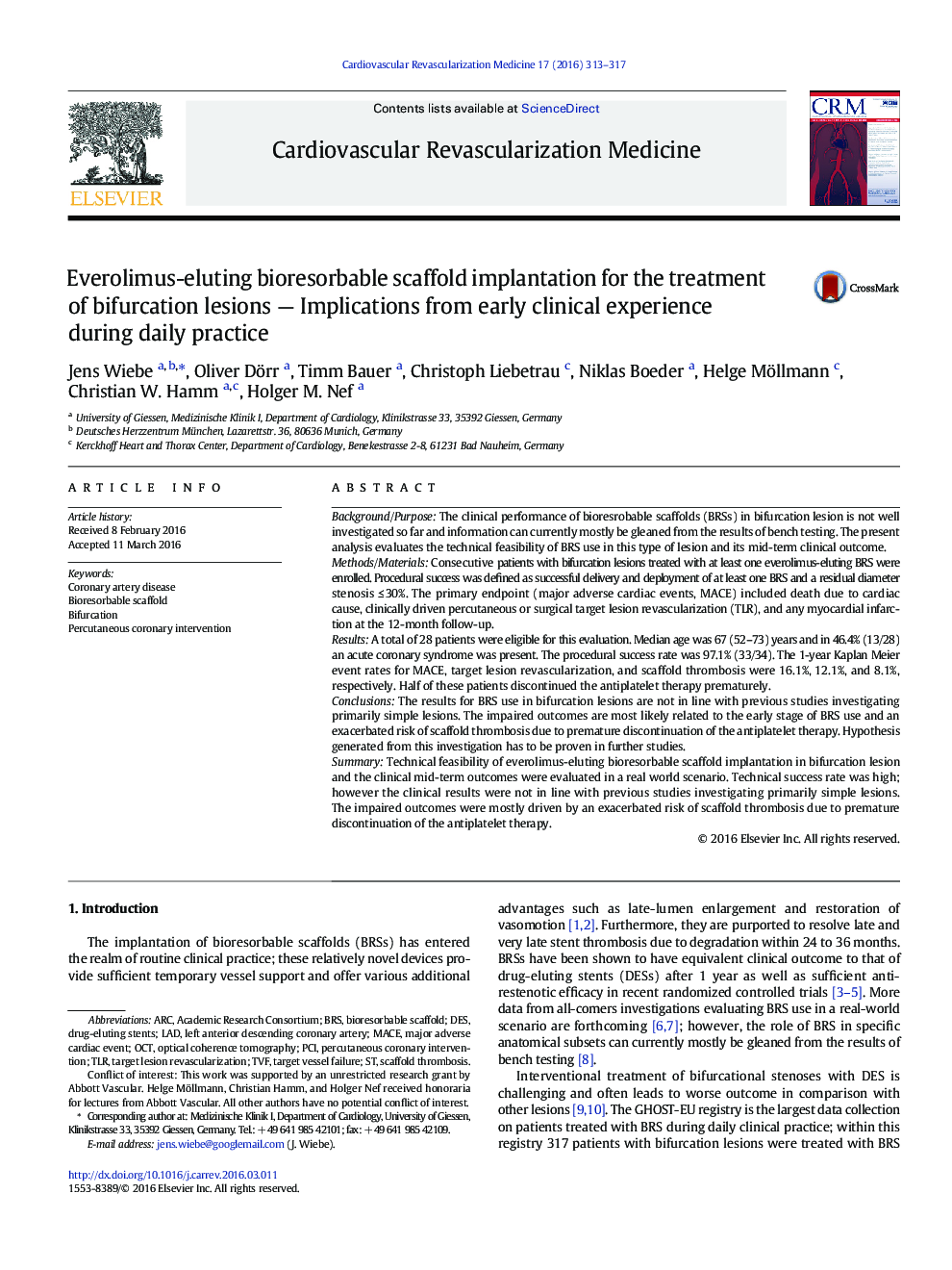| Article ID | Journal | Published Year | Pages | File Type |
|---|---|---|---|---|
| 2836857 | Cardiovascular Revascularization Medicine | 2016 | 5 Pages |
•Bifurcation lesions treated with BRS during daily routine were analyzed.•The procedural success rate was high.•The clinical outcome was less effective compared to previous studies.•A high risk of ST due to premature discontinuation of DAPT was observed.•Lesions selection for BRS implantation should be done carefully.
Background/PurposeThe clinical performance of bioresrobable scaffolds (BRSs) in bifurcation lesion is not well investigated so far and information can currently mostly be gleaned from the results of bench testing. The present analysis evaluates the technical feasibility of BRS use in this type of lesion and its mid-term clinical outcome.Methods/MaterialsConsecutive patients with bifurcation lesions treated with at least one everolimus-eluting BRS were enrolled. Procedural success was defined as successful delivery and deployment of at least one BRS and a residual diameter stenosis ≤ 30%. The primary endpoint (major adverse cardiac events, MACE) included death due to cardiac cause, clinically driven percutaneous or surgical target lesion revascularization (TLR), and any myocardial infarction at the 12-month follow-up.ResultsA total of 28 patients were eligible for this evaluation. Median age was 67 (52–73) years and in 46.4% (13/28) an acute coronary syndrome was present. The procedural success rate was 97.1% (33/34). The 1-year Kaplan Meier event rates for MACE, target lesion revascularization, and scaffold thrombosis were 16.1%, 12.1%, and 8.1%, respectively. Half of these patients discontinued the antiplatelet therapy prematurely.ConclusionsThe results for BRS use in bifurcation lesions are not in line with previous studies investigating primarily simple lesions. The impaired outcomes are most likely related to the early stage of BRS use and an exacerbated risk of scaffold thrombosis due to premature discontinuation of the antiplatelet therapy. Hypothesis generated from this investigation has to be proven in further studies.SummaryTechnical feasibility of everolimus-eluting bioresorbable scaffold implantation in bifurcation lesion and the clinical mid-term outcomes were evaluated in a real world scenario. Technical success rate was high; however the clinical results were not in line with previous studies investigating primarily simple lesions. The impaired outcomes were mostly driven by an exacerbated risk of scaffold thrombosis due to premature discontinuation of the antiplatelet therapy.
